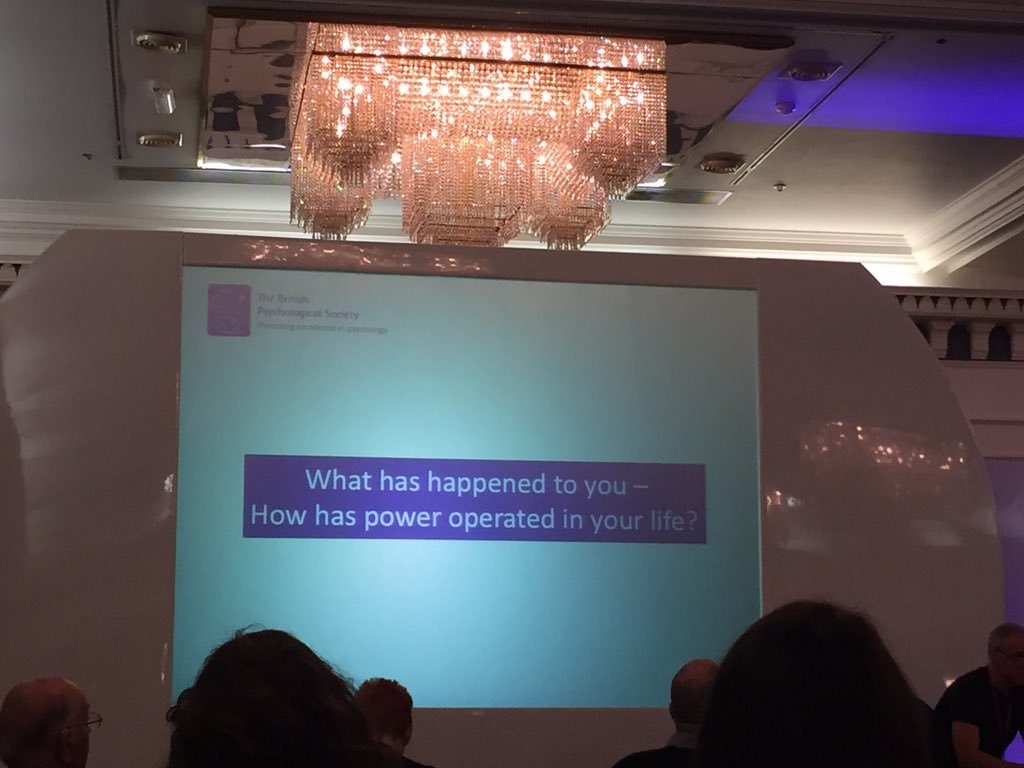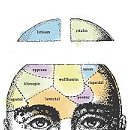This month, the British Psychological Society (BPS) published details on a new framework for understanding human distress that challenges traditional psychiatric diagnostic models. The Power Threat Meaning Framework (PTM), developed by a group of senior psychologists in collaboration with service user campaigners, examines the role of power and threat in people’s lives, as well as how one comes to respond to and create meaning out of these experiences.
“In the longer term, this Framework is intended to support the construction of non-diagnostic, non-blaming, de-mystifying stories about strength and survival, which re-integrate many behaviours and reactions currently diagnosed as symptoms of mental disorder back into the range of universal human experience,” the authors write.

The psychologists from the Division of Clinical Psychology in BPS that were involved in this framework’s development include Lucy Johnstone, Mary Boyle, John Cromby, David Harper, Peter Kinderman, David Pilgrim and John Read. They worked alongside service-users such as Jacqui Dillon and Eleanor Longden to follow through on their aim established in a 2013 position statement:
“To support work, in conjunction with service users, on developing a multi-factorial and contextual approach, which incorporates social, psychological and biological factors.”
The Power Threat Meaning framework is derived from various existing theoretical and philosophical approaches to culminate in more appropriate ways to understand emotional distress and troubled or troubling behavior. Traditional approaches have pathologized people’s experiences of distress, assigning them to labels of “abnormality” caused by internal, biomedical disorders. This has effectively discounted the adaptiveness and resilience inherent in human responses to threat while marginalizing certain communities and ignoring socio-contextual factors that shape human behavior.
The PTM framework asserts that people’s narratives and subjective accounts must be taken seriously. Regarding qualitative and quantitative research methods as equivalent is one way to privilege people’s narratives and subjective meaning, the authors explain. In order to center people’s lived experiences and the complex factors that shape them, the impact of cultural and social factors must also be highlighted. Toward this end, the authors comment on movements to globalize psychiatry:
“All indigenous forms of understanding distress have useful aspects, but there can be no ‘global Psychiatry’ or ‘global Psychology’. Patterns in emotional and behavioural difficulties will always reflect prevailing social and cultural discourses, norms and expectations, including accepted conceptualisations of personhood.”
The main principles underlying the PTM framework focus on understanding the operation of power in people’s lives. Power is understood in myriad ways including how it takes shape dynamically for individuals through interpersonal, social/cultural, economic/material, ideological, biological, coercive, and legal manifestations. The PTM approach explains that one learns to respond to threat based on the role power takes in their life. Threat may present itself to the person and/or to the groups or communities in which they belong. Emotional distress is then related to threat and how threat is mediated by human biology.
In addition to this, the PTM approach focuses on the meaning people assign to the power and threat that they experience. While meaning can be derived from various sources, cultural narratives and discourses that have evolved out of bodily responses are particularly emphasized. Subsequently, people evolve and learn to respond to threat to “ensure their emotional, physical, relational and social survival.” “These responses,” write the authors, “range from largely automatic physiological reactions to linguistically-based or consciously selected actions and responses.”
Finally, the PTM framework distinguishes itself by also acknowledging individual strengths or “power resources,” with emphasis on how they person integrates power, threat, response, and strengths into their personal story.
“Unlike the more traditional biopsychosocial model of mental distress, there is no assumption of pathology and the ‘biological’ aspects are not privileged, but constitute one level of explanation, inextricably linked to all the others,” the authors explain.
“The individual does not exist, and cannot be understood, separately from his/her relationships, community and culture; meaning only arises when social, cultural and biological elements combine; and biological capacities cannot be separated from the social and interpersonal environment.”
Ultimately, the PTM framework seeks to understand individual distress and behaviors through the following questions:
- “‘What has happened to you?’ (How has Power operated in your life?)
- ‘How did it affect you?’ (What kind of Threats does this pose?)
- ‘What sense did you make of it?’ (What is the Meaning of these situations and experiences to you?)
- ‘What did you have to do to survive?’ (What kinds of Threat Response are you using?)
- ‘What are your strengths?’ (What access to Power resources do you have?)
- …and to integrate all the above: ‘What is your story?’”
****
Read the full BPS report here: www.bps.org.uk/news-and-policy/introducing-power-threat-meaning-framework















WOW! 2 whole days this article has been here, and nobody has commented yet? wtf? LOL….
This sounds like at least a step in the right direction….
But “PTM” is a uniquely British invention, and I think it might face more hurdles here in America….
But it’s good to see the psychologists stand up to the pseudoscience lies of the drug racket and means of social control known as “psychiatry”. “Psychiatry” is nothing more than 21st Century Phrenology with potent neuro-toxins….
Report comment
Why did it take them so long to develop this treatment approach? It’s basic stuff.
I doubt it will take much hold here in the U.S.–four out of the six therapists I’ve seen still use the “silver lining” to every cloud approach and the “what you say is not to be trusted because you are mentally ill so if I (therapist) haven’t seen or heard or read about what you claim you’ve experienced, you are delusional.”
I’ve always wondered why the psych world struggles so much to come up with treatments that are based on empathy. Most likely it’s because the fields of psychiatry and psychology are run by ivory-tower scientists who view trauma victims (and all others who suffer from mental anguish) as diseased specimens, rather than as human beings experiencing normal reactions to abnormal events.
Of course, lots of these psych scientists subject animals to the most horrific experiments, over and over again, just to prove what is already known– namely that trauma causes PTSD. So, one could argue that such people do NOT have much empathy to begin with.
Report comment
Thanks for this Zenobia – it is a good summary. I wrote a blog about the launch a couple of days ago. Life has been rather hectic but I will be following up with further blogs – the project is already attracting a good deal of interest.
Report comment
I got a lot of resistance to the idea that whatever I thought happened and whatever I thought it meant, was what it was, because that is what is in my mind. It seems so elementary, but no one in the helping professions I encountered seemed to accept that. What we thought and felt at the time is what we have to work with, you can’t just dismiss it and get anywhere.
Report comment